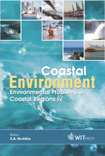Monitoring Recovery Of A Crude Oil-contaminated Saltmarsh Following In-situ Remediation Treatments
Price
Free (open access)
Transaction
Volume
58
Pages
Published
2002
Size
627 kb
Paper DOI
10.2495/CENV020121
Copyright
WIT Press
Author(s)
K Lee, A D Venosa, M T Suidan, C W Greer, G Wohlgeschaffen, C Cobanli, G H Tremblay, J Gauthier & K G Doe
Abstract
Monitoring recovery of a crude oil- contaminated saltmarsh following in-situ remediation treatments K. Lee1, A.D. Venosa2, M.T. Suidan3, C.W. Greer4, G. Wohlgeschaffen1, C. Cobanli1, G.H. Tremblay1, J. Gauthier1 & K.G. Doe6 1Fisheries and Oceans Canada 2US. Environmental Protection Agency 3University of Cincinnati, USA 4National Research Council Canada 5Fisheries and Oceans Canada, Mont-Joli, QC, Canada 6Environment Canada Abstract Wetlands are among the most sensitive of habitats to oil spills. To determine the significance of nutrient enrichment in enhancing wetland restoration in the presence and absence of plants, an intentional spill was conducted on a salt marsh in Atlantic Canada. The study evaluated 6 experimental treatments: unoiled, unoiled with nutrients (nitrate and phosphate fertilizer), natural attenuation, nutrient addition with intact plants, nutrient addition with plants cut back, and nutrient addition with intact plants and tilling to enrich oxygen penetration. Remediation success was quantified by determining the rates of oil loss, plant recovery and reduction in sediment and interstitial water toxicity. Based on the experimental results, on an operational scale, natural attenuation is the recommended clean-up strategy for the ecotype under study. Significant plant recovery was observed after 20 weeks and approximately 90% of the resolved n- alkanes and 70% of the parent and alkyl-substituted polyaromatic hydrocarbons (PAH) were biodegraded.
Keywords





